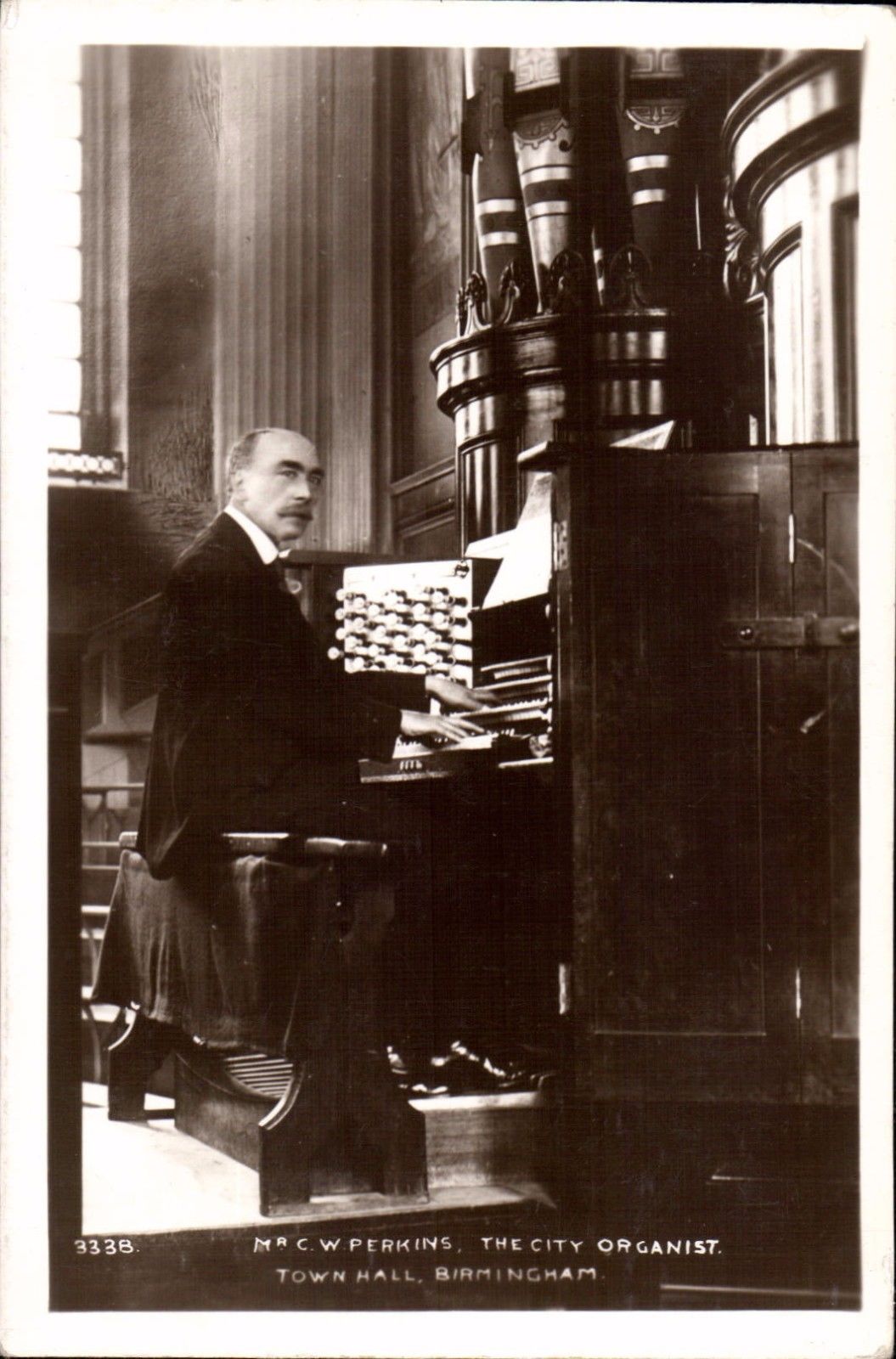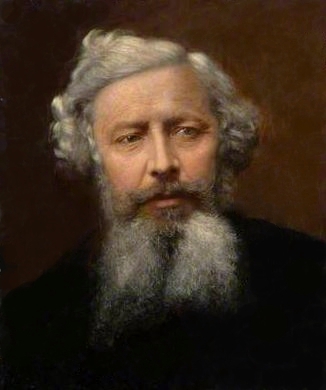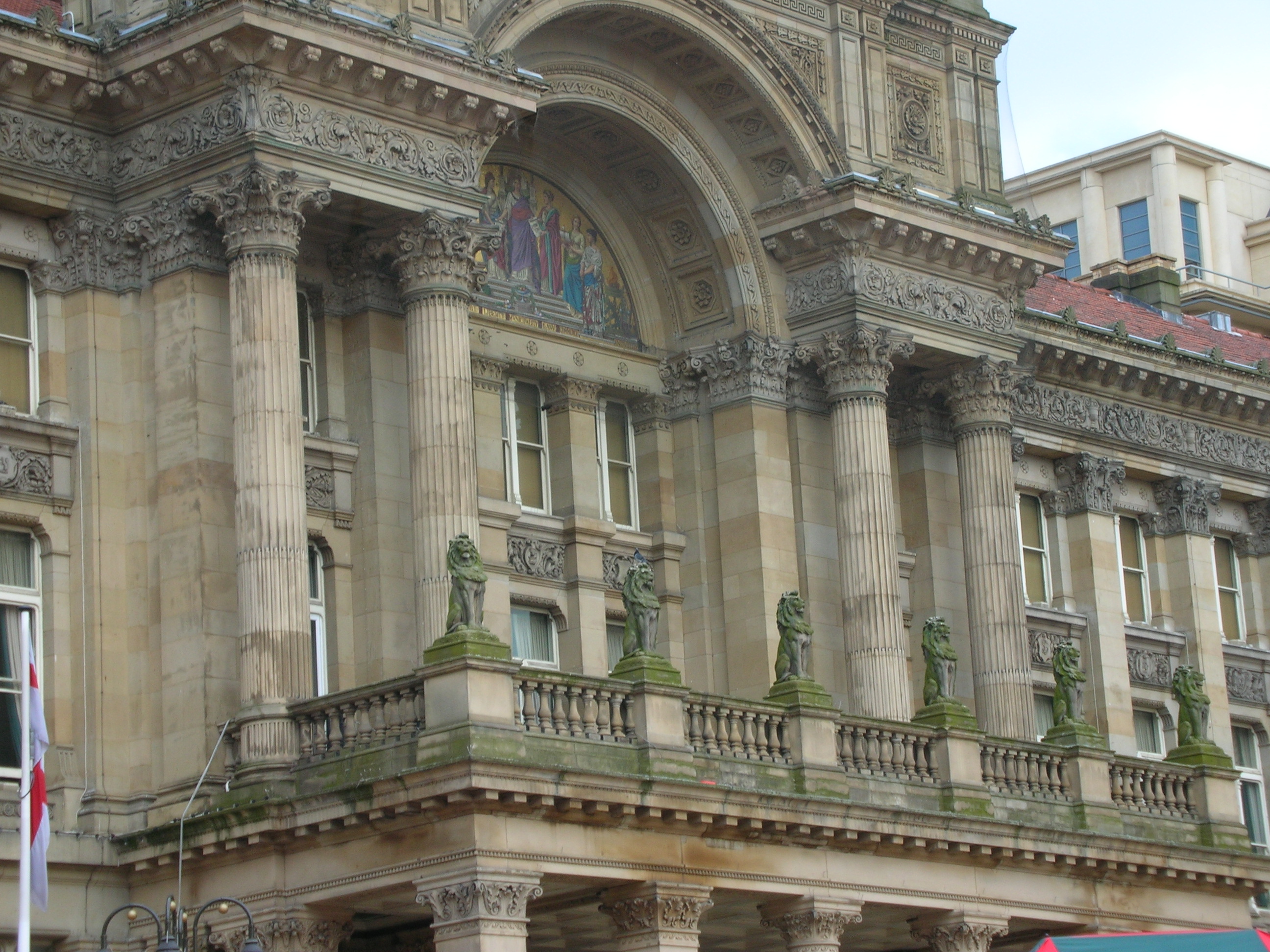|
Carrs Lane Church
Carrs Lane Church, also known as The Church at Carrs Lane is a church in Birmingham and is noted as having the largest free-standing cross in the country. History The church was founded as an independent chapel in 1748 and then enlarged in 1812 at a cost of £2,000 to seat 600 people, not least due to the popularity of the preaching of John Angell James. A further enlargement was undertaken in 1820 to designs by the architect Thomas Stedman Whitwell, which was then re-fronted by Yeoville Thomason in 1876. The church became part of the Congregational Union in 1832. The current building was begun in 1968 by Denys Hinton and Partners and completed in 1971. It became part of the United Reformed Church when the Presbyterian and Congregational churches merged in 1972. The church bears a blue plaque erected by Birmingham Civic Society in 1995 to commemorate Dr R. W. Dale, minister at Carrs Lane from 1854 until his death, and prominent preacher of the " Civic Gospel". Since the clos ... [...More Info...] [...Related Items...] OR: [Wikipedia] [Google] [Baidu] |
Birmingham
Birmingham ( ) is a City status in the United Kingdom, city and metropolitan borough in the metropolitan county of West Midlands (county), West Midlands in England. It is the second-largest city in the United Kingdom with a population of 1.145 million in the city proper, 2.92 million in the West Midlands (county), West Midlands metropolitan county, and approximately 4.3 million in the Birmingham metropolitan area, wider metropolitan area. It is the ESPON metropolitan areas in the United Kingdom, largest UK metropolitan area outside of London. Birmingham is known as the second city of the United Kingdom. Located in the West Midlands (region), West Midlands region of England, approximately from London, Birmingham is considered to be the social, cultural, financial and commercial centre of the Midlands. Distinctively, Birmingham only has small rivers flowing through it, mainly the River Tame, West Midlands, River Tame and its tributaries River Rea and River Cole, West Midlands ... [...More Info...] [...Related Items...] OR: [Wikipedia] [Google] [Baidu] |
Blue Plaque
A blue plaque is a permanent sign installed in a public place in the United Kingdom and elsewhere to commemorate a link between that location and a famous person, event, or former building on the site, serving as a historical marker. The term is used in the United Kingdom in two different senses. It may be used narrowly and specifically to refer to the "official" scheme administered by English Heritage, and currently restricted to sites within Greater London; or it may be used less formally to encompass a number of similar schemes administered by organisations throughout the UK. The plaques erected are made in a variety of designs, shapes, materials and colours: some are blue, others are not. However, the term "blue plaque" is often used informally to encompass all such schemes. The "official" scheme traces its origins to that launched in 1866 in London, on the initiative of the politician William Ewart, to mark the homes and workplaces of famous people. It has been adminis ... [...More Info...] [...Related Items...] OR: [Wikipedia] [Google] [Baidu] |
Charles William Perkins
Charles William Perkins (4 October 1855 - 2 August 1927) was Birmingham City Organist from 1888 to 1923. Life He was born in 1855 the son of Robert A Perkins, jeweller, and Hannah. He studied organ under Andrew Deakin, organist of the Church of the Saviour in Edward Street, Birmingham and studied piano under Dr. Charles Swinnerton Heap. He spent his early years in London where he was also a conductor of the Epsom Choral Society. In November 1887 he wrote from his home at 5 Redburn Street, Tedworth Square, London to apply for the post of organist at Sydney Town Hall but withdrew when he was appointed Birmingham City Organist early the next year. In 1894 Théodore Salomé dedicated the first of his ''Douze pièces nouvelles pour orgue'', vol. 1, op. 59 to Perkins. In 1890 he married Mabel Norah Stone (1873 - 1943) and they had the following children: *Ruth Lynette Perkins (1892 - 1970) *Cecil Howard Perkins (1896 - 1918) *Henry Trovell Perkins (1898 - 1966) For the greater par ... [...More Info...] [...Related Items...] OR: [Wikipedia] [Google] [Baidu] |
Local Ecumenical Partnership
In England and Wales, a local ecumenical partnership (or project) is a partnership between churches of different denominations. First piloted in 1964, over 850 now exist to promote unity between different Christian denominations. The missiologist David Bosch in his ''Transforming Mission'' recognised ecumenism as the most recent paradigm of mission emerging from the worldwide Church. The main thrust of ecumenism is that despite the theological and cultural differences evident between denominations, the mission of any local Church is made more effective through a united witness. In some cases this has meant that a Christian presence has been retained in areas where neither denomination would be able to continue on its own. In addition, ecumenism encourages the sharing of different worship styles, the development of mutual understanding and the ability for the Church to speak with a united voice on social justice issues. Materials from organisations with a strong ecumenical emph ... [...More Info...] [...Related Items...] OR: [Wikipedia] [Google] [Baidu] |
Methodist Central Hall, Birmingham
The Methodist Central Hall, 196–224 Corporation Street, Birmingham, England, is a three-storey red brick and terracotta Grade II* listed building with a distinctive tower at the northern end of Corporation Street. The design complements the Victoria Law Courts opposite, also in terracotta, and includes eclectic details such as the corner turrets resembling Indian chattris. It is located within the Steelhouse Conservation Area. The terracotta was manufactured by the renowned firm of Gibbs and Canning Limited of Tamworth, which also produced decorative works for 179-203 Corporation Street and the interior of the Victoria Law Courts in Birmingham and the Natural History Museum in London. It was built 1903–04 by architects Ewan Harper & James A. Harper. The main hall seated 2,000 and it had more than 30 other rooms, including three school halls. It cost £96,165. The street level has twelve bays of shops (four with their original fronts). The building also runs along Ryd ... [...More Info...] [...Related Items...] OR: [Wikipedia] [Google] [Baidu] |
Civic Gospel
The Civic Gospel was a philosophy of municipal activism and improvement that emerged in Birmingham, England, in the mid-19th century. Tracing its origins to the teaching of independent nonconformist preacher George Dawson, who declared that "a town is a solemn organism through which shall flow, and in which shall be shaped, all the highest, loftiest and truest ends of man's moral nature", it reached its culmination in the mayoralty of Joseph Chamberlain between 1873 and 1876. After Dawson's death in 1876 it was the Congregationalist pastor R. W. Dale who took on the role as the movement's leading nonconformist spokesman. Other major proponents included the Baptist Charles Vince and the Unitarian H. W. Crosskey. Early years During its early years in the 1850s and 1860s the concept of the Civic Gospel combined Dawson's liberal theology with a social and political vision of civic brotherhood that saw a city as having a communal interest that transcended those of its co ... [...More Info...] [...Related Items...] OR: [Wikipedia] [Google] [Baidu] |
Robert William Dale
Robert William Dale (1 December 1829 – 13 March 1895) was an English Congregational church leader based in Birmingham. Life Dale was born in London and educated at Spring Hill College, Birmingham, for the Congregational ministry. In 1853 he was invited to Carr's Lane Chapel, Birmingham, as co-pastor with John Angell James, on whose death in 1859 he became sole pastor for the rest of his life. In the University of London M.A. examination (1853), he came first in philosophy and won the gold medal. The degree of LL.D. was conferred upon him in 1883 by the University of Glasgow during the lord rectorship of John Bright. Yale University gave him its D.D. degree, although he never used it. He served as Chairman of the Congregational Union of England and Wales in 1868 and President of the International Congregational Council in 1891.Dale et al., 1899. Views and publications Dale normally read his sermons, because "if I spoke extemporaneously I should never sit down again". He di ... [...More Info...] [...Related Items...] OR: [Wikipedia] [Google] [Baidu] |
Birmingham Civic Society
Birmingham Civic Society is a voluntary body in Birmingham, England, and is registered with the Civic Trust. History The society was founded at an inaugural meeting on 10 June 1918 in the Birmingham Council House. The first president of the society, the Earl of Plymouth, addressed the assembled aldermen, councillors, architects and other city worthies at that first meeting. He stated the aims of the society, which were: Sir Gilbert Barling Bt CB CBE was the society's first chairman and William Haywood was the first Secretary. Its principal objectives were the stimulation of historical interest in the city, the preservation of buildings and monuments of historic worth, the prevention of vandalism and the promotion of a sense of beauty and civic pride in the lives of citizens. Immediately upon its foundation the society received from an anonymous trust the sum of £15,000 (equivalent to around £596,000 in 2016) to buy land for open spaces, the land later to be veste ... [...More Info...] [...Related Items...] OR: [Wikipedia] [Google] [Baidu] |
Congregational Union
Congregational churches (also Congregationalist churches or Congregationalism) are Protestant churches in the Calvinist tradition practising congregationalist church governance, in which each congregation independently and autonomously runs its own affairs. Congregationalism, as defined by the Pew Research Center, is estimated to represent 0.5 percent of the worldwide Protestant population; though their organizational customs and other ideas influenced significant parts of Protestantism, as well as other Christian congregations. The report defines it very narrowly, encompassing mainly denominations in the United States and the United Kingdom, which can trace their history back to nonconforming Protestants, Puritans, Separatists, Independents, English religious groups coming out of the English Civil War, and other English Dissenters not satisfied with the degree to which the Church of England had been reformed. Congregationalist tradition has a presence in the United Stat ... [...More Info...] [...Related Items...] OR: [Wikipedia] [Google] [Baidu] |
England
England is a country that is part of the United Kingdom. It shares land borders with Wales to its west and Scotland to its north. The Irish Sea lies northwest and the Celtic Sea to the southwest. It is separated from continental Europe by the North Sea to the east and the English Channel to the south. The country covers five-eighths of the island of Great Britain, which lies in the North Atlantic, and includes over 100 smaller islands, such as the Isles of Scilly and the Isle of Wight. The area now called England was first inhabited by modern humans during the Upper Paleolithic period, but takes its name from the Angles, a Germanic tribe deriving its name from the Anglia peninsula, who settled during the 5th and 6th centuries. England became a unified state in the 10th century and has had a significant cultural and legal impact on the wider world since the Age of Discovery, which began during the 15th century. The English language, the Anglican Church, and Engli ... [...More Info...] [...Related Items...] OR: [Wikipedia] [Google] [Baidu] |
Yeoville Thomason
Henry Richard Yeoville Yardley Thomason (17 July 1826 – 19 July 1901) was a British architect active in Birmingham. He was born in Edinburgh to a Birmingham family, and set up his own practice in Birmingham 1853–54. Life Yeoville Thomason was a grandson of Sir Edward Thomason, a silversmith and medallist in Birmingham, and son of Henry Botfield Thomason and Elizabeth Yardley. He was a pupil of Charles Edge, and after qualifying as an architect he worked for the borough surveyor. He designed the Council House after winning a competition. As architect to Birmingham, Dudley and District Banking Company he designed several bank buildings in the area. He retired in 1896. He died in 1901 and is buried in Kensal Green Cemetery. Significant works He designed, amongst others: *In Birmingham: ** The Council House and its immediate extension, the original Art Gallery, 1874–85, Grade II* listed **Singers Hill Synagogue, 1856, Grade II* listed **Great Hampton Works, ... [...More Info...] [...Related Items...] OR: [Wikipedia] [Google] [Baidu] |
Thomas Stedman Whitwell
Thomas Stedman Whitwell (1784–1840) was an English architect and civil engineer, best known for his collaboration with Robert Owen on an unrealised design for a secular communal utopia at New Harmony, Indiana, USA. Biography Early life Thomas Stedman Whitwell was born in 1784 in Coventry, England. He moved to London in his early twenties, as evidenced in records of his having exhibited at the Royal Academy. In 1811 he was employed in the Architect's Office at the London Docks. Architectural Work in Coventry and Birmingham (1813-1825) After gaining some experience at the London Docks, Whitwell returned to Coventry where he designed a modest number of built works both there and in Birmingham, few of which survive. His last completed commission in England was for the Brunswick Theatre in Whitechapel, London. Mortalities were suffered after the roof trusses, overloaded with theatre equipment, collapsed days after its opening. Involvement in New Harmony, Indiana USA Perhaps due t ... [...More Info...] [...Related Items...] OR: [Wikipedia] [Google] [Baidu] |








